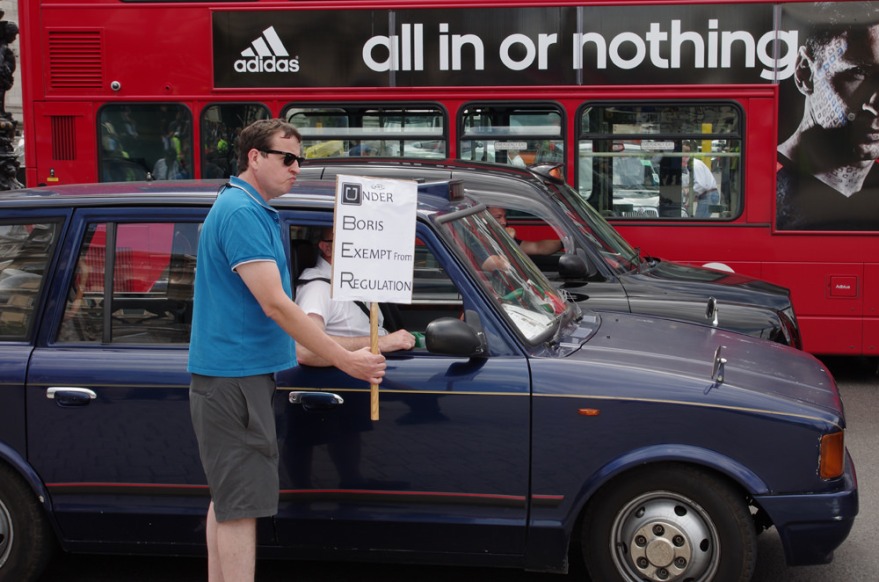Back in February I posted an article I wrote for Novara Wire on protest mapping. In it I mentioned I had a forthcoming article in a themed issue of Media Fields on ‘Spaces of Protest’. Since I mentioned it the issue still isn’t live is now live. Until that time I’ve decided to upload the pre-publication author copy to The full version is now on my ‘selected publications’ page. If anyone is so kind as to reference it please do so as: ‘S. Hind (forthcoming, 2015)‘ Please reference as normal. I’ll post a link to the entire theme issue when it goes live – hopefully sometime soon. Needless to say, I’m looking forward to the other contributions.
In short the paper is on ‘the art of playful disruption’, and attempts to draw some connections between Situationism and recent playful, urban protest events involving ‘maps, kettles and inflatable cobblestones’. I argue that these are ‘urban embodiments of jouissance, playful articulations of political matters’.
I make this case with reference to Alice Becker-Ho and Guy Debord’s A Game of War (1987) strategy game – something I’ve mentioned briefly on this blog before, in November 2013. Rather than go over (once again) some of the classics of Situationism, I’ve drawn on A Game of War because, as I’ve suggested in the article, it ‘was the closest any Situationist work had got to actually devising a practically and tactically useful guide to territorial engagement’. That it did so via the medium of a board game is ‘testament to the movement’s enduring playfulness’.
Two case studies testify to this continuing sensibility. One concerns a smartphone app created by student activists in London in 2010, another centres on the design of so-called ‘inflatable cobblestones’ by the Eclectic Electric Collective (now Tools for Action). Again, I’ve mentioned both previously: here and here (in relation to the Disobedient Objects exhibition). Needless to say I find both quite wonderful examples of what Graham St. John (2008: 172) has called ‘carnivalesque hacking’, i.e. a way to ‘provide creative possibilities’ to ‘deliberately danger the smooth running’ of otherwise sanitized and restricted protest events.
The cobblestone of course has deep links to urban revolt, and specifically to Situationist rebellion, echoed in the famous evocative call of “Sous les pavés, la plage!” (“Under the cobblestones, the beach”). The design of glossy, enlarged, inflatable cobblestones for the purposes of contemporary protest gestures towards this history, but also subverts it in its obvious fragility. As police officers – disarmed by the frivolity an inflatable object brings to a protest demonstration – attack, deflate and confiscate the cumbersome objects it mocks and ridicules them. Watching a police officer attempting to attack an inflatable with a weapon is, well, rather funny, if not wholly farcical. Thus laying bare the unnecessary force of the state for all to see. Each example ‘depends on the successful mobilization of ludic action’. In other words, on the ‘playful articulation of political matters’.



